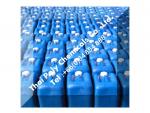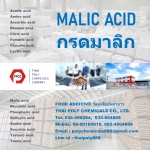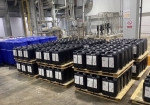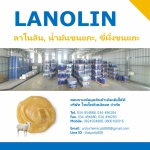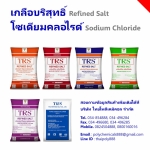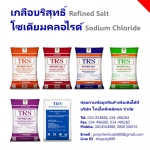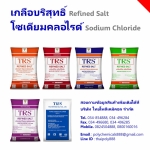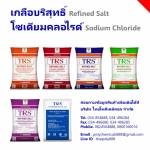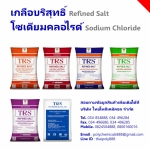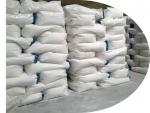Hydrogen peroxide ไฮโดรเจนเปอร์ออกไซด์ H2O2 |
฿1 |
|
ชื่อผู้ประกาศ : Thailandchemicals เบอร์โทรศัพท์ : 034854888, 034496284 โทรศัพท์มือถือ : 0824504888, 0800160016 ที่อยู่ : 36/5 ม.9 ต.นาดี อ.เมืองสมุทรสาคร |
Hydrogen Peroxide, H2O2, ไฮโดรเจนเปอร์ออกไซด์, ไฮโดรเจนเพอร์ออกไซด์
ไฮโดรเจนเพอร์ออกไซด์ (อังกฤษ: hydrogen
peroxide) มีสูตรทางเคมีว่า H2O2 เป็นสารประกอบเพอร์ออกไซด์
(สารที่ประกอบด้วยออกซิเจนสองตัวและเชื่อมกันด้วยพันธะเดี่ยว) รูปแบบที่ง่ายที่สุด มีสภาพเป็นของเหลวใส หนืดกว่าน้ำเล็กน้อย มีรสขม ไม่อยู่ตัว ซึ่งสามารถสลายตัวเป็นออกซิเจนกับน้ำ เมื่อเจือจางจะเป็นสารละลายไม่มีสี เนื่องจากไฮโดรเจนเพอร์ออกไซด์สามารถสลายตัวเป็นน้ำได้เมื่อถูกแสงและความร้อน
คุณสมบัติ
โดยปกติไฮโดรเจนเพอร์ออกไซด์จะสลายตัวไปเองอย่างช้า
ๆ ซึ่งจะได้ผลิตภัณฑ์เป็นน้ำและแก๊สออกซิเจน
แสงสว่างและความร้อนจะช่วยเร่งให้เกิดการสลายตัวเร็วขึ้น
ไฮโดรเจนเพอร์ออกไซด์มีปฏิกิริยาการสลายตัวดังนี้นอกจากนี้ หากมีส่วนผสมของโลหะ
โดยเฉพาะเหล็ก แมงกานีส ทองแดง จะทำให้เกิดการสลายตัวเร็วยิ่งขึ้นวิธีการเก็บรักษาไฮโดรเจนเพอร์ออกไซด์
ให้เก็บไว้ในที่มืด หรือในภาชนะสีน้ำตาลเข้ม ภาชนะทึบแสง และในที่เย็น
นอกจากนี้อาจเติมสารบางชนิดลงไปเล็กน้อย เช่น แอลกอฮอล์
เพื่อป้องกันไม่ให้สลายตัวเร็วเกินไปไฮโดรเจนเพอร์ออกไซด์ยังมีคุณสมบัติเป็นสารไวไฟ
ซึ่งภาชนะบรรจุสารอาจระเบิดได้เมื่อสัมผัสกับอุณหภูมิสูง
ในกรณีเกิดเพลิงไหม้ให้ใช้น้ำฉีดเป็นฝอย หรืออาจใช้ผงเคมีแห้ง โฟม
หรือคาร์บอนไดออกไซด์โดยทั่วไปไฮโดรเจนเพอร์ออกไซด์จะอยู่ในรูปสารละลายความเข้มข้นตั้งแต่
3?90%มักใช้เป็นสารฟอกสีในอาหาร สารทำความสะอาด น้ำยาฆ่าเชื้อ ใช้ฆ่าเชื้อโรคบนผิวหนัง
ใช้ล้างภาพสีน้ำมันเก่า ๆ ให้สดใสขึ้น ทำน้ำยาบ้วนปาก
และไฮโดรเจนเพอร์ออกไซด์เข้มข้น 90% สามารถใช้เป็นเชื้อเพลิงขับเคลื่อนจรวดการใช้ไฮโดรเจนเพอร์ออกไซด์ล้างแผล
จะใช้ในฐานะยาที่มีฤทธิ์ฆ่าเชื้ออ่อน ๆ เฉพาะที่ เช่น บาดแผลเล็ก ๆ
แต่อาจเกิดผลข้างเคียงจากความเป็นพิษ (Cytotoxic) ซึ่งรบกวนการสมานแผล ทำให้แผลแสบและระคายเคือง ดังนั้นจึงควรใช้สารชนิดนี้ในกรณีจำเป็นเท่านั้น ไฮโดรเจนเพอร์ออกไซด์สามารถใช้ฟอกเส้นผม
โดยการนำสารชนิดนี้ไปผสมกับสารชนิดอื่น จนให้สารละลายผสมมีฤทธิ์เป็นด่าง
แล้วนำมาฟอกผม จะทำให้เส้นผมมีสีอ่อนลง ง่ายต่อการเปลี่ยนสีผม
และยังทำให้สีที่ต้องการย้อมติดกับผมได้
ไฮโดรเจนเพอร์ออกไซด์ยังมีส่วนผสมอยู่ในน้ำยาโกรกผม
ซึ่งในยาย้อมผมไม่ควรมีไฮโดรเจนเพอร์ออกไซด์เกิน 6% แต่ที่พบในท้องตลาดมีตั้งแต่ 3?40% ซึ่งหากใช้โดยไม่มีการเจือจางจะทำให้เกิดอาการระคายเคืองหนังศีรษะและเส้นผมอาจถูกทำลายได้ นอกจากนี้ยังใช้เป็นสารฟอกขาวในภาคอุตสาหกรรมฟอกย้อม
ซึ่งสามารถใช้ได้ดีกับเส้นใยเกือบทุกชนิด พร้อมทั้งเกิดอันตรายต่อเส้นใยน้อยที่สุด
ทำให้ไฮโดรเจนเพอร์ออกไซด์มีชื่อเรียกอีกชื่อหนึ่งว่า "ตัวฟอกขาวสากล" (Universal bleaching agent) การฟอกขาวด้วยไฮโดรเจนเพอร์ออกไซด์ต้องใช้โซเดียมซิลิเกต (Na2SiO3) ควบคุมการสลายตัว นอกจากใช้ฟอกเส้นใยแล้วยังใช้ไฮโดรเจนเพอร์ออกไซด์ฟอกงาช้าง และขนนก
และอาจใช้ไฮโดรเจนเพอร์ออกไซด์เป็นสารแอนติคลอร์ (อังกฤษ: antichlor) ซึ่งใช้ทำลายคลอรีนที่ตกค้างบนเส้นใยหลังผ่านการใช้คลอรีนฟอกขาว ไฮโดรเจนเพอร์ออกไซด์ (hydrogen peroxide) มีสูตรโมเลกุลคือ H2O2 เป็นสารฆ่าเชื้อ (sanitizer) ที่มีฤทธิ์ในการยับยั้งการเจริญของแบคทีเรีย (bacteria) โดยไปทำให้เกิดปฏิกิริยา peroxidation ของลิพิดที่เป็นองค์ประกอบอยู่ในชั้นเยื่อหุ้มเซลล์ของแบคทีเรียส่งผลทำให้ความสามารถในการซึมผ่านเข้าและออกจากเยื่อหุ้มเซลล์ของสารต่างๆ เสียไป
มีผลกับแบคทีเรียแกรมลบ มากกว่าแบคทีเรียแกรมบวก และยังมีผลกับเชื้อรา (mold) ได้ โดยจะทำให้เกิด oxidizing effect ภายในเซลล์ และจะไปทำลายโครงสร้างโมเลกุลของโปรตีนภายในเซลล์ แบคทีเรียที่สร้างกรดแล็กทิก (lactic acid bacteria) สามารถสร้างไฮโดรเจนเพอร์ออกไซด์ในสภาวะที่มีออกซิเจนและสามารถยับยั้งการเจริญของจุลินทรีย์ชนิดอื่นกระบวนการที่เกี่ยวข้องกับการสร้างไฮโดรเจนเพอร์ออกไซด์ของแล็กทิกแอสิดแบคทีเรียมีดังนี้pyruvate + O2 + PO43- pyruvate oxidase acetyl phosphate + CO2 + H2O2
การใช้ไฮโดรเจนเพอร์ออกไซด์ในอุตสาหกรรมอาหาร
การใช้ไฮโดรเจนเพอร์ออกไซด์ในอุตสาหกรรมอาหาร
ใช้เพื่อวัตถุประสงค์เป็นสารฆ่าเชื้อ (sanitizer) นิยมใช้เพื่อการฆ๋าเชื้อ เครื่องจักรและอุปกรณ์แปรรูปอาหาร และบรรจุภัณฑ์อาหาร (packaging)ไฮโดรเจนเพอร์ออกไซด์
นิยมใช้เพื่อการฆ่าเชื้อบรรจุภัณฑ์อาหาร โดยเฉพาะ ระบบ aseptic packaging ความเข้มข้นที่ใช้ร้อยละ 30-35 บรรจุภัณฑ์ อาจจะถูกจุ่มลงในอ่างสารละลายหรือถูกพ่นละอองฝอยของไฮโดรเจนเพอร์ออกไซด์
จากนั้นจะถูกเป่าด้วยลมร้อนอุณหภูมิ 60-125องศาเซลเซียส
เพื่อระเหยไฮโดรเจนเพอร์ออกไซด์ส่วนเกินออกไปสารฟอกสีในอาหาร (bleaching agent)
ไฮโดรเจนเปอร์ออกไซด์
ชื่อเรียกอื่น Hydrogen dioxide; hydroperoxide; Albone; Hioxyl
CAS No. 7722-84-1
สูตรโมเลกุล H2O2
น้ำหนักโมเลกุล 34.02
จุดเดือด 152 องศาเซลเซียส
คุณสมบัติ ของเหลวที่ไม่คงตัว ไม่มีสี มีรสขม
มักทำอยู่ในรูปสารละลายในน้ำความเข้มข้น 3-90 %การใช้ที่ผิดกฎหมาย เป็นตัว oxidizing ในขั้นตอนการผลิตโคเคน
การใช้ที่ถูกกฎหมาย สารละลายเข้มข้น 90 % ใช้ขับเคลื่อนจรวด (rocket
propulsion) สารฟอกสีในอาหาร เป็นตัว oxidizer เป็นสารทำความสะอาดและฆ่าเชื้อโรคที่ผิวหนัง ใช้ในทางเภสัชกรรม
ทำน้ำยาบ้วนปาก
น้ำยาฆ่าเชื้อ (sanitary lotion)
กฎหมายควบคุม จัดเป็นวัตถุอันตรายชนิดที่ 1 ตามพระราชบัญญัติวัตถุอันตราย
พ.ศ. 2535
บทลงโทษ ผู้ใดผลิต นำเข้า
ส่งออกหรือมีไว้ในครอบครองซึ่งวัตถุอันตรายชนิดที่ 1 ไม่ปฏิบัติตามประกาศของรัฐมนตรีผู้รับผิดชอบ ต้องระวางโทษจำคุกไม่เกินหกเดือน หรือปรับไม่เกินห้าหมื่นบาท หรือทั้งจำทั้งปรับหน่วยงานที่รับผิดชอบ กรมโรงงานอุตสาหกรรม กระทรวงอุตสาหกรรม
ไฮโดรเจนเปอร์ออกไซด์ หรือ H2O2 สามารถผลิตด้วยการรวม H2
+ O2 ? H2O2 ไฮโดรเจน กับออกซิเจนครับ
ความปลอดภัยนี่คงไม่น่ากังวล
เพราะใช้ได้ทั้งบ้วนปาก หยอดหู ล้างแผล เช็ดสะดือถ้ามันสัมผัสกับสารต่างๆ ถูกแสง
หรือ ออกซิเจน มันจะสลายตัว (ออกซิไดซ์น่ะ) ได้ H2O + O2น้ำ กับออกซิเจน
ไฮโดรเจนเปอร์ออกไซด์มันย่อยสลายสารอินทรีย์ได้ ก็น่าจะฆ่าราได้ถ้าความเข้มข้นเพียงพอ และตัวมันเองก็ไม่เสถียรถ้าความเข้มข้นน้อย ๆ
โดนแสงหน่อยก็สลายหมดแล้วเเต่ประสิทธิภาพต่ำ (ความเข้มข้น 3% ที่ใช้ล้างแผล)
เชื้อราไม่เหมือนแบคทีเรียกับไวรัส
มันโคตร มหาทนทายาท เนื่องด้วยทั้งวิวัฒนาการของมันและเอนไซม์ที่มีอยู่ในตัวมันแก๊สที่เกิดจากการสลายตัวของไฮโดรเจนเพอร์ออกไซด์คือแก๊สออกซิเจน
ราและแบคทีเรียบางชนิดสามารถใช้เอทานอลหรือแอลกอฮอล์เป็นอาหารได้
สปอร์ของราทนสุดๆ
แอลกอฮอล์ทำลายไม่ได้ ต้องใช้ไอโอดีน หรือ โพวิดีนไฮโดรเจนเปอร์ออกไซด์ปลอดภัยสำหรับการใช้, สูตรของมันคือH2O2 พอสลายก็ได้น้ำกับออกซิเจน
ราไม่ได้กินแอลกอฮอล์
แต่มันผลิตออกมา เช่นพวกเหล้าที่กินกันน่ะมาจากหมักยีสต์
ซึ่งก็คือรามันสามารถใช้น้ำตาลผลิตเป็นเอทานอล(แอลกอฮอล์ชนิคหนึ่ง)เอาไว้ฆ่าแบคทีเรียที่มาแย่งอาหารมัน
เพราะงั้นมันเลยทนไฮโดรเจนเปอร์ออกไซด์สำหรับการติดเชื้อเล็บเชื้อรา
การใช้ไฮโดรเจนเปอร์ออกไซด์สำหรับเชื้อราที่เล็บได้รับการแนะนำโดยคนจำนวนมากเนื่องจากเป็นสารต้านเชื้อราในธรรมชาติ
แต่ถ้าไฮโดรเจนเปอร์ออกไซด์มีคุณสมบัติในการป้องกันเชื้อราที่จะสามารถรักษาการติดเชื้อเชื้อราที่เล็บของคุณ
เพียงแค่อ่านด้านล่างเพื่อทราบศักยภาพของการรักษานี้ไฮโดรเจนเปอร์ออกไซด์ : มันคืออะไร?
ไฮโดรเจนเปอร์ออกไซด์ที่เป็นของเหลวใสสีสีฟ้าอ่อนที่มีคุณสมบัติออกซิไดซ์ที่แข็งแกร่ง
สูตรทางเคมีของไฮโดรเจนเปอร์ออกไซด์เป็น H2O2ไฮโดรเจนเปอร์ออกไซด์หรือที่รู้จักกันสำหรับคุณสมบัติที่แข็งแกร่งออกซิไดซ์, มีการใช้ต่างๆรวมถึงการเป็นน้ำยาฆ่าเชื้อจุลินทรีย์
ตัวแทนฟอก, ยาฆ่าเชื้อและเชื้อเพลิงในจรวด เราจำเป็นต้องไฮโดรเจนเปอร์ออกไซด์สำหรับจำนวนของปฏิกิริยาทางเคมีอื่น
ๆ ที่เกิดขึ้นในร่างกายของเรา
หลายคนค้นพบว่าเมื่อมันมาถึงการรักษาเชื้อราที่เล็บ, ไฮโดรเจนเปอร์ออกไซด์เป็นตัวเลือกที่ดี
การทำงานของ ไฮโดรเจนเปอร์ออกไซด์
เล็บเชื้อรา?ไฮโดรเจนเปอร์ออกไซด์นี้การรักษาเชื้อราที่เล็บจะขึ้นอยู่กับการรักษาด้วยการออกซิเดชันซึ่งเป็นที่ใช้วิธีการของการเกิดออกซิเดชันเพื่อกำจัดเชื้อราที่เล็บ
ไฮโดรเจนเปอร์ออกไซด์ที่มีออกซิเจนร้อยละประมาณ 80ดังนั้นเมื่อเล็บที่ติดเชื้อจะแช่ในไฮโดรเจนเปอร์ออกไซด์เป็นทางออกที่เชื้อราเล็บเชื้อราที่ได้รับการฆ่าเนื่องจากการปล่อยของฟองออกซิเจน
sufficienctวิธีการใช้ไฮโดรเจนเปอร์ออกไซด์สำหรับการติดเชื้อเชื้อราเล็บ?
ถ้าคุณได้ตัดสินใจที่จะให้ไฮโดรเจนเปอร์ออกไซด์เล็บรักษาเชื้อราทดลองใช้คุณควรได้รับไฮโดรเจนเปอร์ออกไซด์
3% จากการจัดเก็บสุขภาพของคุณในท้องถิ่น คุณไม่ควรข้ามในระดับความเข้มข้น 3%ของไฮโดรเจนเปอร์ออกไซด์เล็บเชื้อราตั้งแต่วิธีการแก้ปัญหานี้จะทำให้มันไม่ปลอดภัยมากที่จะใช้
มันอาจจะจบลงด้วยผลในการระคายเคืองต่อผิวมันมักแนะนำให้แช่เท้าหรือมือที่ติดเชื้อในการแก้ปัญหาที่สร้างขึ้นจากชิ้นส่วนที่เท่าเทียมกันของไฮโดรเจนเปอร์ออกไซด์และน้ำและปล่อยให้นั่งเป็นเวลาประมาณ
20-30นาทีวันละสองครั้งตามวันที่
หลายคนได้พบในการปรับปรุงเชื้อราที่เล็บของพวกเขาหลังจากที่ใช้ส่วนผสมของไฮโดรเจนเปอร์ออกไซด์ด้วยน้ำส้มสายชูวิธีการรักษานี้อาจทำงานสำหรับบางคน
แต่แน่นอนต้องใช้เวลาและความคงทน
หากคุณต้องการความช่วยเหลือในความซื่อสัตย์ในการกำจัดเชื้อราที่เล็บไม่ข้ามวันในช่วงไฮโดรเจนเปอร์ออกไซด์เล็บเชื้อราการรักษาจนเชื้อราจะเจริญเติบโตสมบูรณ์ออกคุณควรจะเริ่มสังเกตเห็นการปรับปรุงในสองสามเดือนถ้าคุณจะทำตามไฮโดรเจนเปอร์ออกไซด์เล็บติดเชื้อของเชื้อราการรักษาอย่างใกล้ชิด
แต่ถ้าเป็นเชื้อราที่เล็บของคุณสามารถแสดงไม่มีการปรับปรุงคุณควรตรวจสอบกับแพทย์ของคุณทำไมไฮโดรเจนเปอร์ออกไซด์เชื้อราที่เล็บไม่ทำงานสำหรับคนจำนวนมาก?
ที่ถูกต้อง, ไฮโดรเจนเปอร์ออกไซด์สามารถล้างเล็บของคุณของเชื้อรา
แต่มันเป็นสิ่งสำคัญที่จะทำให้การแก้ปัญหาไฮโดรเจนเปอร์ออกไซด์ที่สามารถใช้ได้ nooks
และมุมของ แผ่นเล็บ และเตียงเล็บ
นี้เป็นหลักเนื่องจากเชื้อราสายพันธุ์ตามปกติในพื้นที่เหล่านี้ของเล็บ นอกจากนี้ยังมีไฮโดรเจนเปอร์ออกไซด์เล็บเชื้อราวิธีการแก้ปัญหาควรจะใช้สำหรับการแช่เล็บที่ติดเชื้อเป็นเวลา
ไฮโดรเจนเปอร์ออกไซด์เล็บเชื้อราที่จะใช้เวลานานในการทำงานและในโอกาสเป็นครั้งคราวแก้ไขปัญหานี้ไม่ทำงานตามที่คุณอาจจะมีที่คาดหวัง
มันเป็นปกติเพราะคนจำนวนมากไม่อาจจะพยายามแก้ไขปัญหานี้นานและพวกเขาพบมันที่ก่อกวนไปได้ในแต่ละวันมีทางเลือกที่ดีกว่า : ลองพวกเขา?
มีวิธีการที่ง่ายและสอดคล้องอื่น ๆ ของการบ่มเชื้อเชื้อราที่เล็บของคุณจะ
ผลิตภัณฑ์จากธรรมชาติที่โดดเด่นที่สุดที่สามารถใช้ได้ทั่วไปประกอบด้วยโซลูชั่นป้องกันเชื้อราที่มีประสิทธิภาพพร้อมกับน้ำมันหอมระเหยจากธรรมชาติอื่น
ๆ ที่การขนส่งวิธีธรรมชาติที่เตียงเล็บหนึ่งในส่วนผสมที่มีศักยภาพของ
ชาต้นไม้น้ำมัน เป็นของขวัญจากธรรมชาติที่โดดเด่นของแม่กับเราทุกคน
มันเป็นน้ำมันที่มีมนต์ขลังที่ทำให้มึนงงนับไม่ถ้วนและประโยชน์ต่อสุขภาพเพราะมีธรรมชาติที่ไวรัสมีคุณสมบัติป้องกันเชื้อราและแบคทีเรีย
ชาต้นไม้น้ำมันได้อย่างง่ายดายเจาะหนาเล็บที่ติดเชื้อวิปลาสที่ดีกว่าการรักษาเฉพาะอื่น
ๆ อีกมากมายบางทีอาจจะเป็นไฮโดรเจนเปอร์ออกไซด์เล็บเชื้อราการรักษาไม่ได้จะเป็นทางเลือกที่ดีสำหรับคุณ
แต่คุณอาจคลิกที่ลิงค์ต่อไปนี้เพื่อทราบข้อมูลเพิ่มเติมเกี่ยวกับการรักษานี้ :
ไฮโดรเจนเปอร์ออกไซด์สำหรับเล็บเชื้อราHydrogen peroxide (H2O2) is the simplest peroxide (a compound with an oxygen-oxygen
single bond). It is also a strong oxidizer. Hydrogen peroxide is a clear liquid, slightly more viscous than water. In dilute solution, it appears colorless. Due to its oxidizing properties, hydrogen peroxide is often used as a bleach or cleaning agent. The oxidizing capacity of hydrogen peroxide is so strong that it is considered a highly reactive oxygen species. Concentrated hydrogen peroxide, or 'high-test peroxide', is therefore used as a propellant in rocketry. Organisms also naturally produce hydrogen peroxide as a by-product of oxidative metabolism. Consequently, nearly all living things (specifically, all obligate and facultative aerobes) possess enzymes known as catalase peroxidases, which harmlessly and catalytically decompose low concentrations of
At one time, the most common
household use of hydrogen peroxide was to disinfect wounds, but it is now
thought to slow healing by affecting tissue growth through several possible
factors. Only a very minute concentration of H2O2 can induce healing, and only if not repeatedly applied. Surgical use can lead to gas embolism formation.Claims that diluted hydrogen
peroxide may be taken orally or even intravenously for treating various
sicknesses, including cancer, have been shown to be fraudulent, dangerous, and
illegal, using "misbranding" and language explicitly prohibited by
the Code of Federal Regulations, and have caused several deaths. An
organization of doctors advocating these practices has been shut down by the
U.S. Food and Drug Administration (FDA). Another group,with similar publications, has been absorbed into the American College for
Advancement in Medicine (ACAM), an organization advocating dangerous and
dubious Chelation therapy.Hydrogen peroxide has been used
for creating home-made bombs, and reported to be a major ingredient in the 7 July 2005 London bombings.Uses
Water treatment
Drinking water treatment
Hydrogen peroxide can be used for
cleaning well water or other drinking water sources, by removing odors, organic
materials that change the water taste, and the removal of H2Sand Iron, while reducing trihalomethanes and haloacetic acids. Hydrogen
peroxide can be used to increase or decrease the amount of ozone in drinking
water.Wastewater treatment
Hydrogen peroxide is replacing
prechlorination as a way to deal with odors entering wastewater treatment
plantsSulfide oxidation
Hydrogen peroxide has been
utilized to minimize hydrogen sulfide (H2S)formation.The processing of wastewater
sludge (or biosolids) can cause the generation of hydrogen sulfide, a poisonous
and odoriferous gas. Hydrogen sulfide can also damage equipment and concrete
structures.Sulfides are found throughout the
environment as a result of both natural and industrial processes. Most sulfides
found in nature were produced biologically (under anaerobic conditions) and
occur as free hydrogen sulfide (H2S) ? characterized by its rotten egg odor. Biogenic H2S is encountered in sourgroundwaters, swamps and marshes, natural gas deposits, and sewage
collection/treatment systems. Man-made sources of H2Stypically occur as a result of natural materials containing sulfur (e.g., coal,
gas and oil) being refined into industrial products. For a variety of reasons ?
aesthetics (odor control), health (toxicity), ecological (oxygen depletion in
receiving waters), and economic (corrosion of equipment and infrastructure) ?
sulfide laden wastewater must be handled carefully and go through a remediation
process before it can be released to the environment. Typical discharge limits
for sulfide are < 1 mg/L.Hydrogen peroxide is a strong
oxidizer effective in controlling sulfide and organic-related odors in
wastewater collection and treatment systems. It is typically applied to a
wastewater system where there is a retention time of 30 minutes to 5 hours before hydrogen sulfide is released.Hydrogen peroxide oxidizes the hydrogen sulfide and promotes bio-oxidation of
organic odors.BOD and COD removal from wastewater
Hydrogen peroxide decomposes to
oxygen and water, adding dissolved oxygen to the system, thereby negating some
Biochemical Oxygen Demand (BOD). Typical sewage at its first stage has aerobic
organisms quickly consuming the oxygen, then dying and decomposing, and
anaerobic organisms usually bacteria, set in, creating a toxic environment
through their anaerobic digestion. In order to "re-vitalize" the
water, various methods of aeration are typically used. Hydrogen peroxide has
been used to reduce the BOD and COD of industrial waste-water for many years.
While the cost of removing BOD/COD through chemical oxidation is typically
greater than that through physical or biological means, there are nonetheless
specific situations which justify its use. These include:Pre-digestion of wastewater which
contains moderate to high levels of compounds that are toxic, inhibitory, or
recalcitrant to biological treatment (e.g., pesticides, plasticizers, resins,
coolants, and dyestuffs);Pretreatment of high strength / low flow
wastewater ? where biotreatment may not be practical ? prior to discharge to a
Publicly Owned Treatment Works (POTW);Enhanced separation of entrained organics by
flotation and settling processes; andSupply of supplemental Dissolved
Oxygen (DO) when biological treatment systems experience temporary overloads or
equipment failure.As indicated by these examples,
hydrogen peroxide can be used as a stand-alone treatment or as an enhancement
to existing physical or biological treatment processes, depending on the
situation.Nitrogen oxide (NOx) abatement
Nitrogen oxides are major
pollutants in the atmosphere, being a precursor to acid rain, photochemical
smog, and ozone accumulation. The oxides are mainly nitric oxide (NO) and
nitrogen dioxide (NO2) both of which are corrosive andhazardous to health, typically created from the decomposition of organic
materials, assisted by anaerobic organisms, or released during the combustion
of fossil fuels.With the use of catalytic
converters on automobiles, the initial regulatory focus of controlling of
mobile NOx emissions has reached the point where further restriction has become
economically impractical. Consequently, the stationary sources of NOx emissions
are now being subjected to more stringent standards in many areas of the U.S.
Stationary sources include nitric acid manufacturing plants, manufacturers of
nitrated materials such as fertilizer and explosives, and industrial
manufacturers (metallurgical processors, glass manufacturers, cement kilns,
power generators, etc.) where high processing temperatures are used.Because of the environmental
concerns posed by air pollution, much research time and money have been
expended to develop methods for controlling NOx emissions. Several 'NOx
scrubbing' processes have been developed, using H2O2 as part of the solution, where the nitrogen oxides areconverted to nitrate, nitric acid or nitrogen. Hydrogen peroxide is also used
to eliminate nitrogen oxide development 'at the source', by reacting with HNO
as it is formed, and eliminating its decomposition into NO or NO2.Pollutants removal
Hydrogen peroxide is one of the
most versatile, dependable and environmentally compatible oxidizing agents. The
relative safety and simplicity of its use as an oxidizing agent has led to the
development of a number of applications in refinery wastewater systems: Uncatalyzed hydrogen peroxide
The strong oxidizing power of
hydrogen peroxide makes it suitable for the destruction of a variety of
pollutants. Optimization of conditions using hydrogen peroxide to destroy these
pollutants can involve control of pH, temperature and reaction time. No
additional additives are required.Catalyzed hydrogen peroxide
Pollutants that are more difficult
to oxidize require hydrogen peroxide to be activated with catalysts such as
iron. Catalyzed oxidation can also be used to destroy easily oxidized
pollutants more rapidly.Under acid pH conditions, the
addition of iron salts to a wastewater solution activates hydrogen peroxide to
generate free radicals, which can attack a variety of organic compounds. Other
metal salts and conditions can apply (e.g. in cyanide destruction, a copper
catalyst can be used at a pH of 8.5 ? 11.5).Aeration for fish and plants
Horticulture
Some horticulturalists and users
of hydroponics advocate the use of weak hydrogen peroxide solution in watering
solutions. Its spontaneous decomposition releases oxygen that enhances a
plant's root development and helps to treat root rot (cellular root death due
to lack of oxygen) and a variety of other pests. Fish Aeration
Laboratory tests conducted by fish
culturists in recent years have demonstrated that common household hydrogen
peroxide can be used safely to provide oxygen for small fish. The hydrogen
peroxide releases oxygen by decomposition when it is exposed to catalysts such
as manganese dioxide.Bleaching wood pulp
About 50% of
the world's production of hydrogen peroxide in 1994 was
used for pulp- and paper-bleaching.
Possible alternative to chlorine
bleachesOther bleaching applications are
becoming more important as hydrogen peroxide is seen as an environmentally
benign alternative to chlorine-based bleaches.[48] Howeverscientific studies have found hydrogen peroxide to be ineffective in certain
cases, and generally instruct hospitals, medical institutions, and other
locations where public health is monitored, to use chlorine-based bleaches for
disinfection.Mild bleaches in laundry
detergentsOther major industrial
applications for hydrogen peroxide include the manufacture of sodium
percarbonate and sodium perborate, used as mild bleaches in laundry detergents.Intermediate processes in the
chemical industry
H2O2โซเดียมไฮดรอกไซด์ไฮดรอกเปอร์ออกไซด์hydrogenhydroperoxideไฮโดรเจรเปอร์ออกไซด์Hyoxylโซดาไฟน้ำโซดาไฟ50%dioxide

